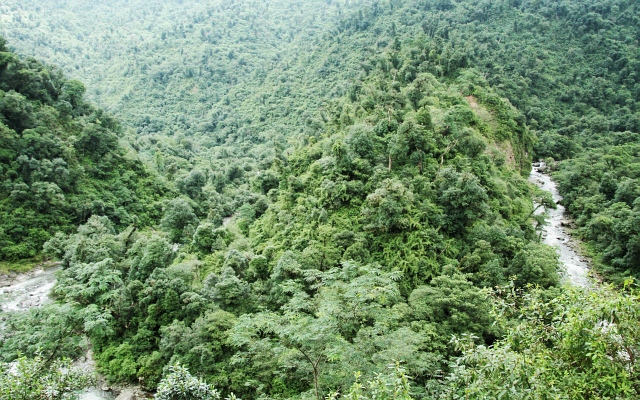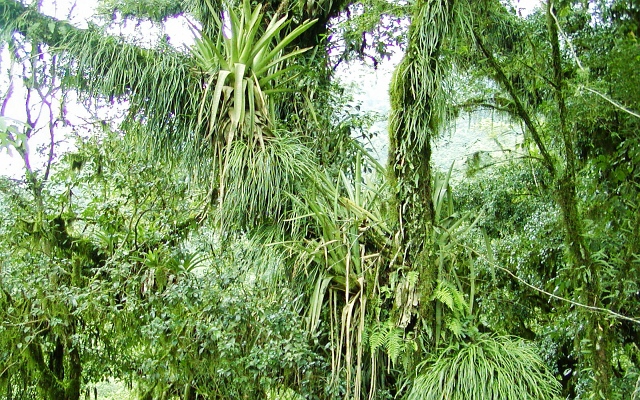

The eastern Andean forelands in the area of Tucumán are part of the outer Tropics, receiving plenty of rainfall during summer - the savanna landscape of the Gran Chaco starts or ends here. The eastern slopes of the Andes, however, reveive rainfall all year round, as the air pushed against the mountains by the trade winds is forced to lift up and cools down. The impressive result of this situation are the yungas: this humid, evergreen mountain rainforest can be characterized as cloud forest in its upper part, near the condensation level. The yungas extend from southwestern Bolivia all the way to northwestern Argentina. They grow above approx. 800 m asl. The busy road leading from Tafí del Valle down to the forelands suddenly dives into this mysterious world, and winds itself down through the Quebrada de Los Sosa in steep and narrow turns. Only a few places allow for stops. The short trail to the pilgrimage chapel Virgen de las Flores is selected here as an example of such a point of interest.
Another place where you can explore the mountain rainforests in the eastern part of the Andes is Machu Picchu. Also the temperate rainforests of southern Chile show some similarities to this type of ecosystem.

A photographic journey through the yungas


You can start your journey through the mountain rainforest by clicking on the arrows or into the image.
The trees are lower in the mountain rainforest, compared to the classic lowland rainforests. Temperature decreases with increasing elevation, so that those tree species in need of warm temperatures decrease in abundance. The relative humidity, in contrast, increases with elevation. One common tree species here belongs to a genus which is well-known from mid-latitudes of the Northern Hemisphere: the alder Alnus acuminata. The mountain rainforest is mostly steep, inaccessibe, and hard to penetrate.














